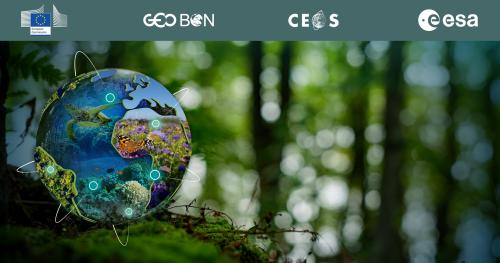The Knowledge Centre on Earth Observation (KCEO) of the Joint Research Centre (JRC) has launched an exploratory initiative to assess how Earth Observation, and hydrological modeling, could support wetland monitoring within Natura 2000 sites.
This work, conducted in collaboration with the Directorate-General for Environment (DG ENV.D3) and the European Environment Agency (EEA), follows the KCEO Deep Dive assessment on Biodiversity.
This preliminary work aims to define technical specifications for a future operational monitoring system that would assist Member States in their reporting obligations under the Habitats Directive by detecting early signs of degradation and assessing conservation status within Natura 2000 sites through the combination of ecological expertise and Earth Observation capabilities.
Policy Context
The project primarily supports the Habitats Directive and the following geospatial monitoring requirements:
Article 4.4: Member States must identify Habitats to protect, and protect a sufficient proportion in Natura 2000 sites (Site designation)
Article 6.2: Member States must prevent degradation within Natura 2000 sites (Compliance)
Article 17: Member States must report every 6 years on their protected habitats and species conservation status (Monitoring)
The initiative also considers requirements from related policies including the Nature Restoration Law (NRL), the EU Carbon Removal & Carbon Farming Certification Regulation (CRCF), and the Water Framework Directive (WFD)
Key Activities
The work is structured around three key activities:
Ecological Characterisation:
Working closely with the Science Service of the Knowledge Centre on Biodiversity (KCBD) of the JRC, we are analyzing the ecological characteristics of European wetland habitats identified in Annex I of the Habitats Directive to understand their proper functioning and identify key pressures and threats leading to degradation.
This foundational work ensures that subsequent monitoring efforts focus on the most relevant indicators while accounting for natural wetland variability across different European landscapes.
EO-based indicators and fitness for purpose analysis:
Building on this ecological understanding, the second component focuses on developing and validating Earth Observation-based indicators.
We identify proxy indicators that can be effectively monitored through satellite data and hydrological models. These include soil characteristics (such as moisture content, ground movement, and temperature), vegetation characteristics (including cover, phenology, and structure), and broader environmental impacts (like water quality, fire occurrence, and climate variables).
For each indicator, we define both minimum and optimum technical requirements based on the specific needs of the Habitats Directive. We then assess available EO products against these requirements using selected reference sites to determine their fitness for purpose, prioritizing wetland types showing high levels of degradation (as reported under Article 17), those with significance beyond the Directive, and areas of particular biodiversity value.
Prototyping:
The final step involves developing analytical tools and prototyping the monitoring system. Specialized spatial and temporal analytical tools will be designed to integrate EO technologies with ground-truth data and hydrological modeling, ensuring they can be effectively utilized by both policymakers and conservation managers.
Event
Participation at BIOSPACE 2025

The initiative has been presented at the BIOSPACE conference.
KCEO actively contributed to the discussion on Wetland Biodiversity with a diverse group of experts from key institutions including ESA, Ramsar, Copenhagen University (UCPH), ETC-UMA, and DHI, identifying key technical and data requirements for improved mapping and monitoring.
Download the Presentation here:
| Originally Published | Last Updated | 27 Feb 2025 | 04 Mar 2025 |
| Related organisation(s) | JRC - Joint Research Centre |
| Knowledge service | Metadata | Earth Observation | Research & InnovationFitness for purpose of EO products |
Share this page
